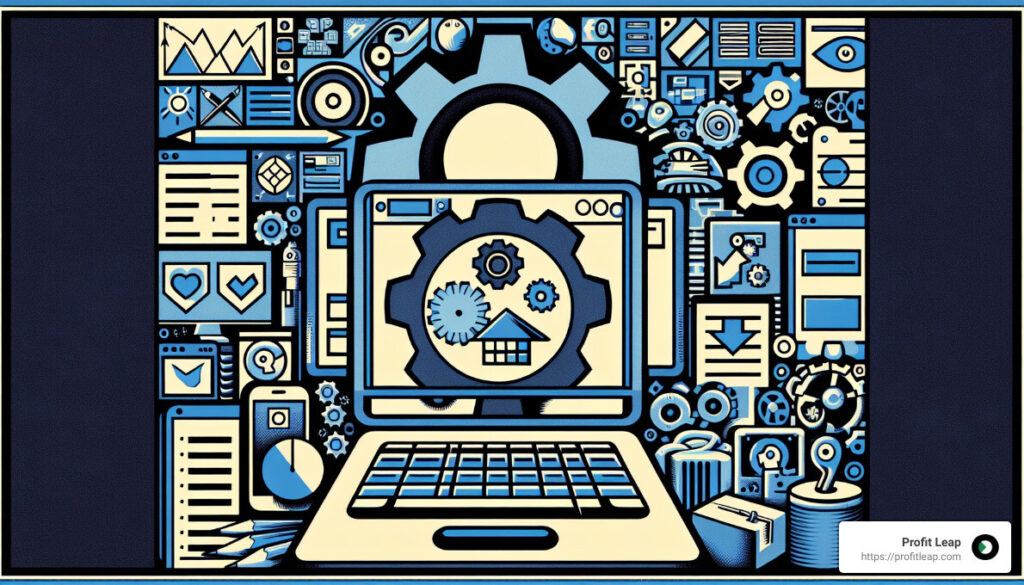Unlocking Success: The Crucial Role of Structured Employee Onboarding
A disciplined onboarding process is an essential component of any successful business strategy. When new employees join a company, their initial experiences lay the groundwork for their future at the organization. An effectively managed onboarding program can significantly impact both individual and organizational success, blending elements like business process consulting and AI business advisory to streamline operations.
The Importance of First Impressions
The first few days and weeks at a new job are pivotal. A meticulously planned onboarding process ensures that new hires are warmly welcomed, thoroughly informed, and supported from the outset. This positive first impression can profoundly affect an employee’s perception of the company, instilling a sense of value and belonging. This is where business scaling strategies come into play, fostering employee engagement, commitment, and loyalty from day one.
Enhancing Employee Retention
A comprehensive onboarding process is directly linked to employee retention. Employees who undergo thorough onboarding are more likely to remain with the company long-term. This is due to the structured process aiding them in understanding their roles, the company culture, and their fit within the larger framework. Employees confident in their roles and connected to the organization are less inclined to pursue opportunities elsewhere, underscoring the importance of financial reporting for SMBs to track such HR metrics.
Boosting Productivity
Employees who experience a systematic onboarding process are generally more productive. They gain a clear understanding of their responsibilities, the company’s expectations, and the available resources. This clarity allows them to quickly become fully functional in their new roles, reducing the ramp-up time needed.
Fostering a Positive Work Culture
Onboarding is also a chance to introduce new hires to the company culture and integrate them into the team. An organized approach helps employees build a sense of community and belonging. Aligning new hires with the company’s values and their colleagues encourages a positive and collaborative work environment.
The Consequences of a Poor Onboarding Experience
Conversely, a poorly managed onboarding process can leave new employees feeling confused, frustrated, and isolated, leading to low morale, decreased productivity, and a higher turnover rate. The costs associated with recruiting and training new staff are significant, making it economically sensible to invest in a robust onboarding process.
Essentials for Successful Employee Onboarding
Pre-boarding
The onboarding journey begins even before a new employee’s first day. Pre-boarding includes all activities from the acceptance of the job offer to the start date. This stage is crucial for setting expectations and ensuring a smooth transition into the company. Effective pre-boarding can include sending welcome emails, providing company information, handling paperwork digitally, and preparing the new hire’s workspace.
First-Day Formalities
The first day is critical for making a lasting impression and orienting new hires to the company culture. It usually involves a warm welcome from the team, an office tour, an overview of company policies, and an introduction to their roles and responsibilities.
Training and Development
A strong training program is foundational to an effective onboarding process. Tailored to the new hire’s role, it should progressively build their knowledge and skills. This can include job-specific tasks, company-wide procedures, and access to learning platforms to encourage continuous growth.
Mentorship Programs
Pairing new employees with mentors can greatly enhance their onboarding experience. Mentors provide guidance, support, and insights into the company’s culture and expectations, helping new hires integrate into the team more quickly.
Continuous Feedback
Feedback should be a continuous process, not a one-time event. Regular check-ins help management to address any issues, adjust training as needed, and recognize achievements. This ongoing communication helps new employees feel valued and supported, which can enhance job satisfaction and retention.
The Role of Technology
Modern onboarding practices increasingly rely on technology. From digital platforms to e-learning tools, technology can streamline administrative tasks, create engaging training experiences, and facilitate communication. Leveraging technology effectively can make the onboarding process more dynamic and efficient, helping new hires become productive team members swiftly.
Mastering Onboarding: Real-World Successes and Proven Strategies
Case Studies of Successful Onboarding
Case studies from companies like Zappos and Google illustrate the impact of innovative onboarding processes. Zappos immerses new hires in company culture and customer service excellence, while Google ensures new staff are productive from the start with peer buddies and clear onboarding checklists.
Best Practices for Onboarding
Personalizing the onboarding experience is essential, as demonstrated by companies like Etsy, which welcomes new hires with customized workstations. Setting clear expectations from the start and providing ample support and resources, as seen with Salesforce’s “Aloha Ambassadors” and Twitter’s “Yes to Desk” programs, are also crucial for a successful onboarding process.
Takeaways and Action Items
Effective employee onboarding enhances new hires’ initial experiences, creating a positive first impression that fosters value and belonging. This engagement is crucial for nurturing commitment and loyalty, making employees feel integral to the team. A comprehensive onboarding process boosts retention by clarifying roles, expectations, and corporate culture, accelerating the transition to peak performance and integrating new recruits into the workplace’s positive ethos.
Enhancing onboarding through pre-boarding activities, tailored training, and strategic technology use enriches the experience and smooths new hire assimilation. Continuous feedback and mentorship create a supportive and inclusive work environment. Success stories from companies like Zappos and Google highlight the impact of innovative onboarding strategies, emphasizing personalization, clear expectations, and comprehensive support. These elements form a robust onboarding framework that attracts and retains top talent, driving organizational success and fostering a culture of continuous improvement and strategic alignment.
| ✳️Start by gathering all necessary information and resources that a new hire might need ✳️Digital Platform Setup ✳️Communication Plan | |
| ✳️Identify Potential Mentors ✳️Develop a Mentorship Framework ✳️Launch and Monitor the Program | |
| ✳️Identify Key Milestones and Objectives ✳️Develop Training and Integration Activities ✳️Create a Monitoring and Feedback Mechanism | |
| ✳️Schedule Feedback Sessions ✳️Prepare Feedback Guidelines ✳️Implement a Follow-Up Process | |
| ✳️Define Success Metrics ✳️Collect and Analyze Data ✳️Implement Improvements |
Get your FREE 8 Gears Assessment Score in 10 minutes!



